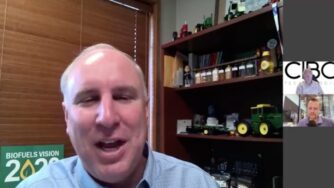Organizations, consumers, and investors are increasingly scrutinizing sustainability programs and looking for companies to rise to the challenge of reducing their impact on the environment. To become more sustainable, companies should start by understanding their current situation and start monitoring carbon emissions.
What are the three scopes and why should your organization care about them? The three scopes help companies to lay a firm foundation for carbon reduction strategies, with the associated financial savings. Companies can achieve sustainable reductions both within their operations and across global value chains, identifying key areas that generate the biggest GHGs. Watch our webinar for a deep dive into Scope 3 emission reduction.
We’ll cover:
- Understand how scope 1, scope 2, and scope 3 greenhouse emissions can impact a business
- Discover how monitoring and reporting on Scope 3 emission can help reduce the impact of climate change
- Ways to build carbon insetting and carbon offsetting into a supply chain
Speakers:
- Grant Ivison-Lane, Director of Agricultural Carbon at CIBO
About Grant Ivison-Lane, Director of Agricultural Carbon at CIBO
Grant Ivison-Lane is the Director of Agricultural Carbon at CIBO. Grant is multidisciplinary with a background in ecosystem services assessment and greenhouse gas (GHG) accounting. Grant has seven years of experience supporting GHG inventories for large agricultural companies, market programs that generate Scope 3 GHG credits, standards advocacy, and CDP reporting in compliance with the GHG-Protocol Corporate and Scope 3 Standards. Grant developed some of the first agricultural inventories of GHG emissions in California’s San Joaquin Valley and also has applied ecosystem services frameworks to support decision-making on large, multi-stakeholder projects. Grant is passionate about ensuring the full breadth of societal benefits generated by agriculture are valued when we consider all that working lands can provide.



